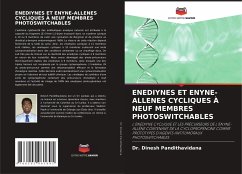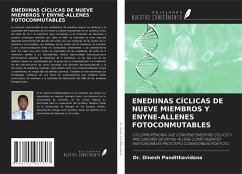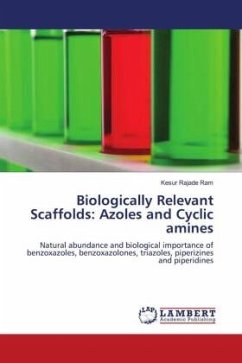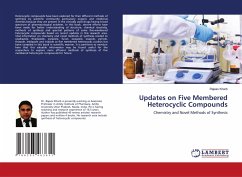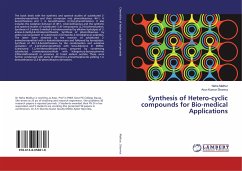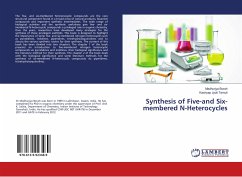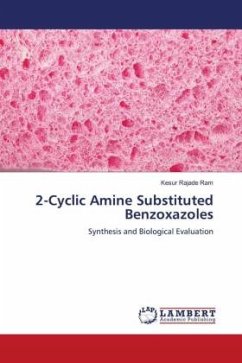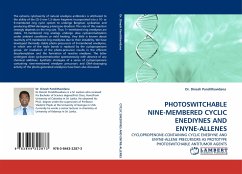
PHOTOSWITCHABLE NINE-MEMBERED CYCLIC ENEDIYNES AND ENYNE-ALLENES
CYCLOPROPENONE-CONTAINING CYCLIC ENEDIYNE AND ENYNE-ALLENE PRECURSORS AS PROTOTYPE PHOTOSWITCHABLE ANTITUMOR AGENTS
Versandkostenfrei!
Versandfertig in 6-10 Tagen
39,99 €
inkl. MwSt.

PAYBACK Punkte
20 °P sammeln!
The extreme cytotoxicity of natural enediyne antibiotics is attributed to the ability of the (Z)-3-ene-1,5-diyne fragment incorporated into a 10- or 9-membered ring cyclic system to undergo Bergman cyclization and producing dDNA-damaging p-benzyne diradical. The rate of this reaction strongly depends on the ring size. Thus 11-membered ring enediynes are stable, 10-membered ring analogs undergo slow cycloaromatization under ambient conditions or mild heating. Very little is known about reactivity of 9-membered ring enediynes due to their instability. We have developed thermally stable photo-pre...
The extreme cytotoxicity of natural enediyne antibiotics is attributed to the ability of the (Z)-3-ene-1,5-diyne fragment incorporated into a 10- or 9-membered ring cyclic system to undergo Bergman cyclization and producing dDNA-damaging p-benzyne diradical. The rate of this reaction strongly depends on the ring size. Thus 11-membered ring enediynes are stable, 10-membered ring analogs undergo slow cycloaromatization under ambient conditions or mild heating. Very little is known about reactivity of 9-membered ring enediynes due to their instability. We have developed thermally stable photo-precursors of 9-membered enediynes, in which one of the triple bonds is replaced by the cyclopropenone group. UV irradiation of the photo-precursor results in the efficient decarbonylation and the formation of reactive enediyne. The latter undergoes clean cycloaromatization spontaneously with absence of any chemical additives. Synthetic strategies of a series of cyclopropenone containing nine-membered enediyne precursors and DNA-cleavaging activity of the photo-generated enediynes have been also discussed.



